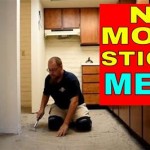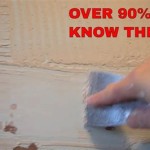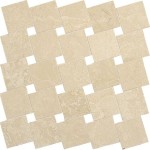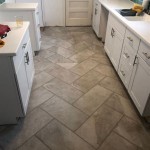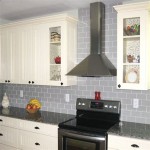How To Install A Ceiling Tile Around a Sprinkler Head
Installing ceiling tiles can significantly improve the aesthetic and acoustic properties of a room. However, working around existing fixtures like sprinkler heads requires precision and careful execution to ensure both the integrity of the ceiling grid and the operational readiness of the fire suppression system. This article provides a comprehensive guide to installing ceiling tiles while accommodating sprinkler heads, covering essential safety precautions, necessary tools, and step-by-step instructions.
Before commencing work, it is crucial to prioritize safety. Sprinkler heads are a vital component of a building's fire safety system, and any damage or obstruction could have severe consequences. Therefore, ensure the building's fire alarm system is temporarily disabled (with proper authorization and notification, adhering to local regulations) to prevent accidental activation during the installation process. Wear appropriate personal protective equipment (PPE), including safety glasses and gloves, to protect against falling debris and sharp edges.
A thorough understanding of the sprinkler system is also necessary. Sprinkler heads are designed to activate at a specific temperature, and any modifications or obstructions that alter their heat sensitivity could compromise their effectiveness. Avoid touching the sprinkler head directly, and never paint or cover it with anything. The installation process should not introduce any foreign materials into the sprinkler head or piping.
Carefully inspect the existing ceiling grid around the sprinkler head. Ensure the grid is level and securely fastened to the ceiling joists. If any sections of the grid are damaged or misaligned, they should be repaired or replaced before installing the new ceiling tiles. A stable and properly aligned grid is essential for a professional and secure ceiling installation.
Key Considerations Before Starting
Prior to physically manipulating the ceiling tiles, there are three paramount elements that need to be addressed: identifying the sprinkler head type, selecting appropriate tools, and acquiring the correct type of ceiling tile. Neglecting these preliminary steps can result in damage to the sprinkler system, improper tile installation, or even voiding the building's fire safety compliance.
First, accurately identify the type of sprinkler head installed. Different types of sprinkler heads exist, each with varying distances between the head and the ceiling plane. Some are recessed, while others are pendant or upright. Knowing the specific type is vital for determining the correct method of cutting and installing the ceiling tile without obstructing the sprinkler's functionality. Measure the distance from the ceiling grid to the bottom of the sprinkler head, taking into account any escutcheon plates (the decorative ring around the sprinkler head). This measurement is critical for precisely cutting the ceiling tile.
Second, select the correct tools for the job. A utility knife with a sharp blade is essential for accurately cutting the ceiling tiles. A measuring tape is needed for precise measurements. A template or compass can be useful for drawing the circular cut-out around the sprinkler head. Safety glasses and gloves are necessary for personal protection. A stepladder is also required to safely reach the ceiling grid. Ensure the ladder is stable and positioned properly before climbing.
Third, choose the appropriate type and size of ceiling tile. Ceiling tiles come in various materials, sizes, and thicknesses. Select a tile that matches the existing ceiling or meets the desired aesthetic requirements. Also, ensure the tile is compatible with the ceiling grid system. Consider the acoustic properties of the tile, as well as its fire resistance rating. Check the local building codes and regulations to ensure the selected tile meets the required safety standards.
Step-by-Step Installation Process
With the preliminary steps completed and necessary tools gathered, the physical installation process can begin. This process requires patience and accuracy to prevent damage to the sprinkler system and ensure a professional-looking finished product. A gradual, iterative approach is recommended, with frequent checks to ensure alignment and proper fit.
Begin by measuring the distance from the edge of the ceiling grid to the center of the sprinkler head. Transfer these measurements onto the back of the ceiling tile. This will mark the exact location where the circular cut-out needs to be made. Double-check the measurements to ensure accuracy. An incorrect measurement will result in a misaligned cut-out and an improperly installed ceiling tile.
Using a compass or a template, draw a circle on the back of the tile to represent the circumference of the sprinkler head's escutcheon (or, if there's no escutcheon, a slightly larger circle than the sprinkler head itself, allowing for a small gap). The diameter of the circle should be slightly larger than the outer diameter of the escutcheon plate to allow for easy tile removal in the future and to avoid placing undue pressure on the sprinkler head. Aim for a gap of approximately 1/8 to 1/4 inch.
Carefully cut out the circle using a utility knife with a sharp blade. Score the circle several times, gradually deepening the cut until the center portion of the tile is removed. Avoid applying excessive pressure, which could cause the tile to crack or break. Use a slow and steady cutting motion to ensure a clean and precise cut. After removing the center, smooth the edges of the cut-out with the utility knife for a neat finish.
Gently lift the ceiling tile into place and align the cut-out with the sprinkler head. Carefully slide the tile around the sprinkler head and into the ceiling grid. Ensure the tile sits flush with the surrounding tiles and that the grid clips properly engage. Avoid forcing the tile into place, as this could damage the tile or the sprinkler head. If the tile does not fit easily, remove it and make any necessary adjustments to the cut-out.
Visually inspect the installation to ensure the sprinkler head is not obstructed and that the tile is securely in place. The sprinkler head should be clearly visible and free from any obstructions. The tile should be level with the surrounding tiles and the grid clips should be properly engaged. If any adjustments are needed, carefully remove the tile and make the necessary corrections.
Addressing Potential Installation Issues
While the previous steps outline the ideal installation process, real-world scenarios can often present unforeseen challenges. These challenges can range from uneven ceiling grids to sprinkler heads that are not perfectly centered within the grid. A proactive approach to anticipating and addressing these issues is crucial for a successful installation.
One common issue is an uneven ceiling grid. If the grid is not level, the ceiling tiles will not sit flush, resulting in an unprofessional appearance. To address this, use shims to level the grid before installing the tiles. Shims can be placed between the grid and the ceiling joists to raise or lower individual sections of the grid. Use a level to ensure the grid is perfectly level before proceeding with the tile installation.
Another potential issue is a sprinkler head that is not perfectly centered within the grid. This can make it difficult to accurately cut the hole in the ceiling tile. To address this, carefully measure the distance from each side of the grid to the center of the sprinkler head. Use these measurements to accurately mark the location of the hole on the back of the tile. If the sprinkler head is significantly off-center, it may be necessary to slightly enlarge the hole in the tile to accommodate the offset.
Sometimes, the escutcheon plate of the sprinkler head may be damaged or missing. If the escutcheon plate is damaged, it should be replaced before installing the ceiling tile. A missing escutcheon plate can be replaced with a new one that matches the existing hardware. Ensure the new escutcheon plate is properly installed and securely fastened to the sprinkler head before proceeding with the tile installation.
Furthermore, some older buildings may have sprinkler systems that are not up to current code. If the sprinkler system is outdated or non-compliant, it is recommended to consult with a qualified fire protection professional before making any modifications to the ceiling. An expert can assess the system and recommend any necessary upgrades or repairs.
Finally, it is important to remember never to paint the sprinkler head or obstruct it in any way. Painting the sprinkler head can affect its sensitivity and prevent it from activating properly in the event of a fire. Obstructions can also hinder the sprinkler's ability to distribute water effectively. Always ensure the sprinkler head is clean, unobstructed, and in good working order.

How To Install Ceiling Tile With Sprinkler Head In The Middle Skill Stacking

How To Remove And Replace A Ceiling Tile With Fire Sprinkler

How To Install Ceiling Tile With Sprinkler Head In The Middle Breakdown Skill Stacking

How To Install Ceiling Tile With Sprinkler Head In The Middle Breakdown Skill Stacking

Suspended Ceilings The Risks Of Improper Sprinkler Head Alignment International Fire Protection

Drop Out Ceiling Panels Ceilume

How To Cut A Sprinkler Head Into Ceiling Tile

How To Replace A Recessed Fire Sprinkler Escutcheon

Drop Out Ceilings Walls

How To Replace A Recessed Fire Sprinkler Escutcheon
Related Posts

